Examining the Rosicrucian Utopian Quest to Modern Martinist
Hello friends and readers!
This blog post brings us to the final section on the Martinist Order Review.
 As you know, I am presently doing the Reviews of the Rosicrucian Orders.
As you know, I am presently doing the Reviews of the Rosicrucian Orders.
This section is an installment of the Martinist Review and is dedicated to its Pansophy score. So far I’ve done four installments on the Martinist Order, spanning across many pages due to the versatility and diverse nature of the various branches and beliefs of the different branches of the M.O.
For later comers, the earlier Martinist Order posts were:
- Intro to the Martinist Order Review.
- Martinism vs. Gnosticism
- Martinist Trinosophia
- Pansophy and Theosophy
Each section added to the traditional score upon which any Rosicrucian Order is judged. For new comers I refer you to my ‘Scoring System of the Rosicrucian Orders’ document which provides evidence for how the original tradition was conceived, as in this series the Orders are measured against those intentions.
Are the modern Rosicrucian Orders so different from the original one described in the manifestos?
It would seem so far that the Martinist Order has done particularly well.
To recap:
The first blog post revealed the Rosicrucian connection to the M.O. Not only that, but that the founders behind the Martinist Order also taught that LCM himself (founder of Martinism) was, according to them, actually initiated into a secret Rosicrucian brotherhood discretely called the R.C d’Orient.
The second blog post examined the Christianity of the Rosicrucians vs. that of the Gnostics. It turned out that Gnosticism and Rosicrucian ideas were not at all the same. Rosicrucians adore Nature, and Sophia. Gnostics saw Nature as a prison and blamed Sophia for the Fall of Man. As it turned out, the Christian cosmology of the Martinist is identical to the Rosicrucian, but missing just a few Hermetic forms.
The third blog post was my favorite. It was dedicated to uncovering the three occult teachings any mystical body calling itself ‘Rosicrucian’ must have; the Alchemy, Magic & Cabala teachings of the Martinist were examined in detail. Due to the presence of the alchemical teachings from Fulcanelli and Cagliostro, as well as the magical theurgy of the Elu Cohens in some branches it was revealed that some Martinist Orders have very strong magical, cabalistic and alchemical teachings, clearly proving it has the three arts studied by early Rosicrucians.
Pansophy vs. Theosophy was the last blog post dedicated to uncovering the Reintegration legend of the Martinist. The ‘Fall of Adam’ as taught by both Boehme and Saint Martin was examined alongside the Hermetic legend of Christian Rosenkreuz and found to have an identical blueprint. Not only that but I also revealed how those two closely matched the King Arthur cycle & the Isis and Osiris legend.
Indeed any Order under review could hardly do better.
Three main scores are given for any Order, where the Martinist Order thus far has received 17/20 for its Christosophia Score and 16/30 for its Trinosophia Score.
The only two scores remaining are the Pansophy Score and Wild Card Score.
Today we’ll see how the M.O stands up against the Pansophy test, worth 30 points. But…
Wait, What the Hell Was Pansophy Again?
Pansophy itself consist of three main qualities that make it truly Pansophic.
The first of these is that Pansophy aims towards a utopian future for humankind. Thus the Rosicrucians did not only consider the restoration of occult wisdom, but also envisioned a new age for humankind.
They referred to works such as Campanella’s ‘City of the Sun’ which entertained a utopian society in which everyone lived within a city, in which the city walls themselves were a teaching device, and in its center was a solar temple, overseen by a Priest-King. The Rosicrucian tomb of CRC was modeled upon these seven sided structures and was provided as a device for fulfilling the Hermetic prophecy that ‘someday the gods of Egypt shall once again return and be installed in a city.’
The second signpost for Pansophy is the famous Reformation Quest of the Rosicrucians. Here, not only did the Rosicrucians dream of a utopian future, but they actively sought to become movers and shakers of society, either through their literary works, by motivating humanity towards that goal, or by presenting new notions, such as concepts for reforming education, believing that if everyone knew more then this would socially bring us as a collective whole towards a golden age.
On that idea I have to agree, and in Pansophy we find the real difference between the New Age and Rosicrucian thought. Most spiritual traditions, including ‘Rosicrucian’ ones are only concerned with ‘understanding yourself.’ In contrast to Pansophy those systems are very self-serving.
The third attribute of Pansophy is split into two sub-categories.
The Reintegration Legend is the first element here. It is not only a heroic legend of ages, recalled from a fall from grace to spiritual redemption, but also follows certain patterns that are consistent throughout its various forms. It is at once Hermetic, historic and aims towards that utopia.
The second quality to the third sign that makes an Order truly Pansophic is the ‘Universal Schemata’ theory. Really the Reintegration legend is shown to touch upon every corner of the universe.
Remember, Pansophy means ‘All-Wisdom.’
Its’ mystical teachings should provide not only a system in which to comprehend everything mystically, but also intelligently, across all scales of being, from above to below, within a universal matrix.
The Tree of Life of the Cabala does not qualify enough, seeing that this Universal Schemata theory is not only connected to the Reintegration legend, but enters into a Rosicrucian Order through its skeletonic framework. This means that the degrees of the Order should not only progress us through the legend of redemption/Reintegration, but should also escalate us through the realms of reality. As if this was not enough, the schemata should also provide the initiate a spiritual path of mysticism, done in solitude, that mirrors not only the grades of the Order, but also the ascent through the legend of the fall and Reintegration, as well as bringing us to a state where we see that utopia.
The problem of this Pansophy is that not many people know much about it outside of Germany.
As Susanna Akermann points out in her ‘Rose Cross Over the Baltic’ many early Rosicrucian enthusiasts recognized that Rosicrucianism is a sub-branch of Pansophy which is a broader Hermetic subject.
Like each Traditional Pillar, these three attributes are worth a potential ten points each.
Pansophy 1: Martinist Utopian Vision Score.
The Martinist Utopian Score is measured against the utopian values of the Rosicrucians, and not only the R.C brotherhood but also the Pansophic works that Comenius refers to, namely Bacons’ New Atlantis, City of the Sun by Campanella and Christianopolis by Andreas, said to be a manifesto writer himself.
Let it be known, if the Rosicrucians hadn’t embraced Pansophy they would have been nothing other than occultist using alchemical and astrological symbolism. What they did was take something that was at once occult, yet transforming it into a vehicle bringing down the rays of the sun for all humanity.
Most people signing up to Rosicrucian Orders, who want pretty lessons about mysticism and the laws of vibration, will most likely yawn and find this facet of the R.C boring. To them I say ‘you are probably a useless mystic only concerned with your own ‘self-serving evolution,’ who does not perceive how occultism can become such a powerful force, that it may even regenerate the minds of all civilization.’
If your spirituality does not extend to all aspects of life it’s not worth doing.
Rosicrucians are supposed to be more than mere occultist.
They are supposed to be the bright minds that inspire
the progress of all humanity.
All of that starts with a vision, even if it is extremely idealistic. What we could call utopian.
But where do we find such idealistic values in the Martinist Order?
As with any M.O study we must begin with Jacob Boehme. It is a known fact he was not a utopian visionary. Actually a lot of his views were quite dark when it came to the presence of evil.
However, that being said, there are clues that lead us to believe he ultimately taught that the Universal Reintegration was a worldly event. After all, he taught that creation was brought into being so that God himself might be able to understand herself. God is seeking self-revelation and self-actualization in time, through a dialectic of positive and negatives, which causes everything to evolve, including human beings, ultimately towards everything being absorbed into the moment God fully knows himself.
(You’ll have to excuse the use of masculine terminology there)
Thus while Boehme did not talk of a future time of utopia, he did speak of this future universal Gnosis. This also sheds light upon the Reintegration of All Beings from Pasqually of the Elu Cohens.
There is no doubt that Martinism draws upon the Elu Cohens as much as it does from Saint Martin.
Pasqually’s version of Universal Reintegration provided a mythology describing some tragic event in history. Like the Biblical fall of Adam, his ‘Universal Adam’ also fell, but it was never a physical being. His Rosicrucian myth described an over-soul type guardian protector of the universe.
Here, the Universal Adam was a super-angel that shattered into many sparks. It was these sparks which were to become the souls of all human beings, divided as we are, we struggle against one another.
The Reintegration of Beings projected a future whereby all human beings would return to this singular consciousness of the Primordial, Adam. Some Martinist believe this occurs to us in the afterlife, our Adamic spark returning to this mythical being, helping it slowly restore as we unite with its original model, while others believe that it meant enlightenment, a state of existence whereby all humanity would co-exist in harmony, sharing in a manifested Universal Human consciousness here on earth.
Such a state would indeed imply world peace. And we do find further hints of the utopia concept.
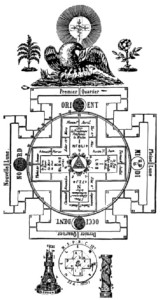
It occurs in Martinist references to the New Jerusalem, which is well known in Christian mysticism.
The M.O is after all a Christian mystical Order and it appears that the Heavenly Jerusalem of the Martinist is indeed akin to the Rosicrucian cities of the sun. They both describe divine architecture, as well as a universal state of peace. In Jerusalem humanity walks with God again.
Like most Rosicrucian Orders today the M.O has also become something of a mystical-occult teaching Order. Most students simply ignore these elements focusing on the ‘cool’ occult stuff instead.
In fact Jacob Boehme does mention New Jerusalem in describing the way to give birth to Christ within. Boehme shows that King Herod, who wishes to slay the babe Christ, is the “king of pride, who finds his kingdom endangered and seeks to kill the child, who is the become the ruler of the ‘New Jerusalem’ in man.” It is quite clear that for Boehme the New Jerusalem is the regenerated human being.
Where the real light of this utopian notion shines in Martinism is not in regular Martinist branches as established by Papus, but instead is to be found in its other branch – the C.B.C.S.
In French it is called ‘Order de Chevaliers Bienfaisantes de la Cite Sainte’ abbreviated as C.B.C.S.
Pasqually is equally the founder of the Martinist Order as any other. Saint Martin was one of his main students. The other was Jean Baptiste Willermoz, who founded the C.B.C.S in 1778.
Thus Martinism is said to be made up of three branches; the Elu Cohens of Pasqually, the C.B.C.S and the Martinism of Saint Martin and Boehme. Together they are called Martinezism.
The branch of Willermoz takes a more Rosicrucian turn; seeing that Willermoz would take the Rectified Scottish Rite of Freemasonry, combine this with Templar Freemasonry and then for practical occultism its initiates would undertake the religious occult theurgy of Pasqually’s Elect Cohens.
The meaning of C.B.C.S is ‘Order of the Beneficial Knights of the Holy City.’
With its Templarism it took on the qualities of chivalry, taking on the roles of holy knights themselves. With its Cohens work it remained a priesthood working for the Reintegration of Beings.
Thus a balance was found between the practice of virtue and assisting in the elevation of spirits by angelic helpers, as the Cohens do. In some branches of Egyptian Masonry the C.B.C.S is given either as a single Templar degree, or as a side Order. It is considered a very powerful Order.
Central to the knighthood of the Willermoz tradition is the Temple of Jerusalem. Like all Masonry they are builders of humanity, and work towards the Temple of New Jerusalem as well.
The ‘Knights of the Holy City work for a society where all men can unfold themselves, and seek the sacred way they desire, in harmony and peace with each other.’ This ideal is very similar to the attributes given in Campanella’s City of the Sun; a Christian utopia of religious union and harmony.
Of course I am reaching here…
Not very many Martinist Orders take on this quality. The C.B.C.S is unique in its approach from the other two branches of the Cohens and Saint Martin’s way. Actually in this regard the C.B.C.S is one of the strongest Pansophic Orders, especially seeing that the King Arthur legend is also covered under the Pansophic umbrella. The legend of Camelot and the Round Table is also a utopian Pansophic theme.
Very few Orders cover an approach to living the New Jerusalem now, in the real, so well.
However, Pansophical utopian models do not only describe an ideal way of living, they are also caught up in the notion of divine architecture. Masonry does this well, the C.B.C.S raises the score somewhat, yet it is just not Pansophic enough. Another Pansophic group was the Hartlib Circle, also Rosicrucian, which designed the sun palace and gardens of Versailles in France. They actually built a living model of Campanella’s City of the Sun, complete with tributes to Apollo and Venus.
So in contrast the Martinist Order, while having at least one vein of a utopian tradition, still does not encapsulate the full scope of what Pansophy has to offer. Read this quote;
“The ‘future’ city finds its inspiration in a philosophical, psychological and/or sociological concept, and its aim is to determine a living place for a new society in times to come. The visionary thinker looks ahead, see things, and anticipates the unexpected. The concept of a future city must include all the best of the present, which will be projected towards unknown ages.” BINGHAMl, 2004.
The vision for a future utopia in Boehme and Saint Martin are scant at best. But there is a solution.
My suggestion to Martinist Orders, should they wish to expand their horizons and mirror the Rosicrucian model; why not embrace the teachings of the C.B.C.S as well? Not only that, there are a few, even if just a couple, Martinist Orders that closely observe the architectural mysteries of Fulcanelli.
Had the Martinist Order included a City of the Sun diagram in one of its degree rituals, we would be looking at the strongest Rosicrucian tradition on the planet.
This is where you’ll see me patching in a few elements into Martinism, coupled with some Hermetic light and a sprinkling of the Golden Dawn, in the publication of my own rituals.
When measured against the Rosicrucian tradition,’ the Martinist Order is lucky to have the C.B.C.S.
The Martinist Order receives a full 6/10 for its utopian score. Not bad at all.
Hopefully this post will inspire Martinist to seek after the C.B.C.S teachings. I know of at least two Orders that already do so. One branch for example, the Rose Croix Martinist Order, located in Ontario, emphasizes that although Martinist Order and Synarchy names the second degree initiate a ‘Knight of the Holy Sepulchre’ no study is given in this direction of any kind. In order to remedy that, their students study the Grail legends and chivalric practices. This is done in three knightly degrees after the Martinist third, expanding 2nd degree ideas, and after that are priestly degrees expanding their R.C 3rd degree.
Another Order in Texas has unified the 3 manifestations of Martinism with the 1st degree focusing on Elus Cohens, the 2nd degree on the spiritual knighthood of CBCS, and the 3rd degree on St. Martin and Papus’ ‘Way of the Heart’.”
Pansophy 2: Martinist Reformation Score.
The Rosicrucians did not only draw upon the City of the Sun models. They also created ideas that would help implement the utopian movement throughout society, bringing us towards the goal.
This is where the overly idealistic vision of the utopian facet becomes pragmatic.
As we have seen, some Pansophist went so far as to design actual Apollo gardens, dedicated to Venus as well, bringing the manifestos to architectural life. The City of the Sun was no longer on paper at the Garden of Versailles. Another pragmatic avenue the Rosicrucians undertook was to overhaul education. Andreas and Comenius redeveloped ideas of learning, which have had a lasting impact today.
Their idea was simple. If people broadened their horizons they would simply get along better, operate on a higher level of civility, which they believed needed to be instilled from childhood. Their education was Pan-sophic, meaning students were presented with unified notions connecting all things, from architecture, to politics, to agriculture and astronomy. The universe would be mapped out in the minds of their pupils during their development into adulthood.
Few Rosicrucian Orders have delved into Pansophy enough. In fact Rudolf Steiner, who was a Rosicrucian, is the only person to include a Pansophic approach to his branch of the Rosicrucian Order in recent times. Few others have dared branch beyond alchemical/magical thought, which to the Pansophist means they are nothing other than snake-oil occultists.
That being said, Steiner’s occultism often becomes something from the Twilight Zone.
Goldilocks Should Have Reviewed the Rosicrucian Orders
She Knew Which Bed Was Too Big and Too Small
 But who’s Order ‘was just right?’ We’ll get to that soon…
But who’s Order ‘was just right?’ We’ll get to that soon…
The Martinist Order itself does not approach Pansophy officially and has a mystical approach to reformation. Its best demonstration is shown in the ‘Operative & General Ritual’ used by all Martinist Orders. It is a ceremony held by Martinist around the world for the elevation of souls and aid to the sick.
The aim of the ritual is to ‘unite their efforts by working together, at certain monthly periods, on their common work, the Universal Reintegration.’
The ritual is a prayer-mysticism, using elements from both the Elu Cohens operative work as well as Saint Martins’ way of the heart. The Martinists invoke the Qabalistic powers, Yehashua and the past masters in order to enable them to bring peace on earth.
Working at the same time around the planet, they invoke the blessings towards several ends:
- The restoration of man to its original state of virtue.
- The triumph of a universal spirituality.
- The peace of the world.
- That humanity shall be preserved against elemental disasters.
- Against illnesses and plagues.
- The nourishment of the fruits of the earth and its fertility.
- The blessing of wandering souls.
- Re-illumination of souls lured into darkness by materialism.
- Prayers for the sick, afflicted and prisoners.
- The blessing of the heads of Christian and non-Christian nations.
- The elevation of fallen spirits in the vegetable, mineral and animal kingdoms.
- The exorcism of the influence of demons.
The section on the triumph of a universal spirituality especially rings similar to ‘Christianopolis’ by Andrea declaring in prayer ‘May thy Universal Church here below reflect the one of High Above, may it expand over the world, etc.’ Here in particular we find a reference to a heavenly Jerusalem and the coming utopia.
However, Pansophist did not deal with reformation through occultism. Without practical models, such as architectural plans and a reformed education the Pansophist would consider such occultism hopeful verbiage and perhaps ‘mere words,’ which could never offer a pragmatic means for reformation.
Of course this does not demerit what Martinist do. The Operative Ritual is brilliant and unites all Martinists. Any Rosicrucian Order should have such a ritual to channel those positive forces. What we are looking for in Pansophy is a practical avenue in which to release those forces as well.
This is where Freemasonry serves as a positive vehicle to receive the light of the Rose Croix. I’ve written about this before, seeing that the light of occultism, as received through the mystical work of the Rosicrucians, has the outer degrees of Masonry in which to send its rays. Masonry itself, being firmly rooted in society through charities, nursing homes and moral education has Pansophic potential.
Martinism would receive a relatively low reformation score here, but fortunately Martinism is more than just Saint Martin. Several branches also look to Fulcanelli, Cagliostro, Pasqually and even Sufism.
Boehme certainly is the real light behind Martinism. Although he wasn’t a utopian it should be stated; he inspired several utopian societies.
These societies were very much real living Cities of the Sun, as described by Campanella and Andreas.
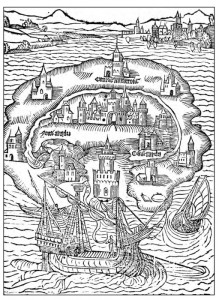
The various models always describe seven sides, or seven gates or castles. Even Thomas Moore’s ‘Utopia’ has seven castles around the island if you take a close look. His in particular was an earthly city of god, reiterating the New Jerusalem in the Book of Revelations.
The utopian communities inspired by Boehme were the Ephrata, Harmony, and Economy societies to name a few. In the same way Swedenborg never founded any church, and yet there is a Swedenborg New Church, Boehme very much planted the seeds. It is only natural that they should have tried to live in their own communities, inspired by works such as Utopia, Christianopolis ec.
The Koreshans settlement started in 1870 is of particular note. You can see in this diagram below that their plan truly was to build a Christian utopia very much mirroring the Rosicrucian City of the Sun.
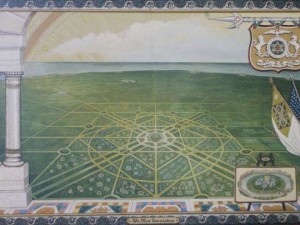 Thus via Boehme to utopian followers we find full blown utopian Pansophy.
Thus via Boehme to utopian followers we find full blown utopian Pansophy.
Compared to the occult assistance Martinists offer through the Operative Ritual I find such communities living examples, truly bringing the reformation quest forwards. The City of the Sun model is a Hermetic blueprint, and it is employed in various scales, such as in the smaller Tomb of Christian Rosenkreuz, which is a miniature version as a ‘Cloister of the Sun,’ taken further in these Pietists towns.
Taking Martinism alone their Reformation Score would stunt the score somewhat. This is why I believe Theosophy needs to become the greater mainstay of Martinist studies.
Rescuing its Rosicrucian elements, Louis Claude de Saint Martin did in fact address the problem of arriving to the City of the Sun, although not under those words, the principle is the same.
In his work ‘Considerations of Politics’ 1794, Saint Martin describes a mystical understanding of the French Revolution, in which he found himself. In it he also turned to addressing political problems, developing several occult theories which describe an enlightened leadership. He said:
- The will for community reflects our true higher nature.
- Strife/wars against community are reflections of our fallen state.
- That we find strife unhappy proves that discord is unnatural to our divine nature.
- The French Revolution was a rebalancing of community back to a more natural state.
- We are the divided sparks of a fallen divine being, the Universal Adam.
- This is why there is a General Will which may bring community harmonization.
- Individual wills are not the starting point of social order, which creates a paradox.
- It appears individuals either give up independence or have it taken away in community.
- But never will the General Will form itself from particular wills.
- On the contrary, it is the Particular Wills which must form themselves form the General Will.
- The General Will is the unique source of the divine thought of Reintegration.
- The very existence of social formation points to a fundamental original order.
- The goal of human association therefore must be the recovery of this higher unity.
- Thus its guiding force cannot be drawn from political elections, seeing that these are drawn from a myriad of conflicting desires and parties from the division of Particular Wills.
- In fact, having political parties for election can only lead to social devastation.
- Political leaders claim to announce the divine General Will, which is impossible.
- Instead they have to be a ‘reflection of a power superior to them.’
- Therefore the legislator must be impregnated with spirit and life.
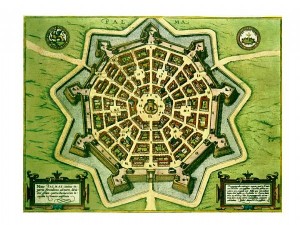
While not describing the design of the City of the Sun, he makes it quite clear he is speaking of the same Priest-King class which governs it from the central temple as described by Campanella, ‘the great ruler among them is a priest whom the call by Hoh, although we should call him Metaphysic.’
This coupled with the influences of Bohemian Theosophy makes for rich soils of further study. It is clear that Martinism is a part of Theosophy, and not the way around.
Theosophy is broader in scope, and if Martinist students are able to embrace the full extent of Theosophy, coupled with Saint Martin’s political ideas it certainly offers a chance for a more Rosicrucian direction.
The potential is there. The question only remains as to how many Martinist wish to delve further.
Another often overlooked angle found in the M.O is also that of Elias Artista, as used in its prayers and rituals. As a term it was first coined by Paracelsus, where this theme summons notions of the ‘return of Elijah the prophet, as precursor to the second coming of Christ.’ But there is more to this, seeing that for Paracelsus and early Rosicrucians this Elias Artista would also be the prophet of the reformation, who would arrive soon in Europe to usher in a new age for humanity, teach all chemist the true secrets of nature, and his appearance would occur as the Church collapses. All very R.C notions, and yet Elias Artista does not appear in anything of Boehme or his chain of Theosophers. Indeed that the Martinist Order embraced this theme suggest that the M.O is totally Rosicrucian all but in name.
The Martinist Order receives 6/10 for their Reformation Score.
If Boehme had established a utopian society and the M.O had continued elements of it by utilizing the ideas of Saint Martin then this score would be raised. Further to that, if the various M.O founders had gone beyond occultism and proposed useful ideas for agriculture, education, social structure etc. not unlike what Steiner did for his students then Goldilocks would have snuggled into her regalia and said ‘Ah, but this cloak. This cloak fits just right.’
My thoughts are; the keys are all there, it’s just missing some meat on the bone.
Pansophy 3: Martinist Universal Schemata Score.
One of the most misunderstood subjects of Rosicrucian Pansophy is that of the universal schemata, which embeds cosmic model ideas into the structure of the Rosicrucian Order.
Here, the macrocosm is presented in the microcosm. The Rosicrucian Order itself becomes a living breathing vessel which transmits knowledge and science pertaining to all things, thus not only a model of the universe, but is also a revelation of reintegration and regeneration.
This idea is not at all new. Careful examination of Campanella’s ‘City of the Sun’ not only describes a harmonious society living in the grace of the light, but that society itself is set within an architectural structure, which itself presents science and knowledge of Nature.
Now, we have established that there are several versions of this City of the Sun used by ancient Rosicrucians, and that there are different scales of it, from the macrocosmic Olympian meeting of the gods, as described by Bruno at one end of the scale, declining into seven sided cities of the sun, and then ending at the other end of the scale in the seven sided Rosicrucian tomb.
The Rosicrucian tomb is a compendium of knowledge, a Pansophic Theatre of Memory. Campanella’s City of the Sun is also engraved with an encyclopedia of all life forms on its walls.
If you read Campanella and the Fama, you are looking at two living teaching devices. One is for an entire city, the other for a cloister of monks. Yet both serve the same purpose.
Thus, what we are looking for in Pansophy is that the Order itself should be a teaching device.
This is where the cosmic and geometric diagrams traditional to Pansophy come in. The tomb of Christian Rosenkreuz is entirely a 3D diagram or teaching device. What’s more it also describes a Reintegration of Man through its emblems, such as bound serpents upon the floor, seals of God, and ever glowing light.
A Rosicrucian Order, if it is to have any type of formal gathering, should follow the Fama and Pansophy in this respect. Diagrams are important, not only for learning but also for initiation. The City of the Sun and the Rosicrucian Tomb are both monuments to the universe.
The Rosicrucian Order naturally applies this rule, or else it loses the real source of its traditional oomph!
Whether examining initiation rituals, temple consecration ceremonies, or an opening of the hall, we should see Pansophy at work here, where the temple, or meeting room, becomes a living representation of the universe, as well as supplying icons depicting the path towards Reintegration.
The two sides to the universal schemata theory as already stated are: 1) the Reintegration Legend and 2) Universal Schemata model. Many Rosicrucian Orders completely miss the point.
The Reintegration Legend of the Martinist Order has already been covered in depth in my previous post ‘Pansophy vs. Theosophy’ which examined the fall of Adam and the regeneration through Sophia.
A conclusion was drawn; that the Venus of the Chemical Wedding was the Sophia of the M.O.
Thus the Reintegration Legend of the Martinist passed with flying colors. It truly is Rosicrucian.
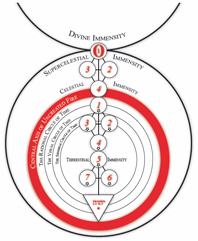
The second attribute however is more troublesome. There is no official model of the universe used in Martinist Orders. For example some refer to the ‘Universal Table’ of Pasqually and Saint Martin.
Clearly this is not your standard Cabalistic Tree of Life.
Jacob Boehme’s model of the universe is even more difficult to approach. Not because of the model itself, but because of the complexity of it, a subject needing deep analysis for later. What I have observed though is that his Tree of Life is more alchemical than most and fits with Pansophy.
Several Martinist Orders do use the Cabalistic Tree of Life model in the temple, discretely.
In its temple use, I cannot share due to oaths, I would say this approach has been present since Papus. This has to do with the layout of the temple furniture and temple floor.
There are also five degrees proper to the Martinist Order, which may or may not, depending who you ask, correspond to the five circles upon the middle pillar of the Tree of Life.
Thus the third degree truly is ‘Rosicrucian’ being the initiation of Tiphareth and its solar nature. The higher Unknown Superior classes then belong to Daath, the realm of hidden knowledge and Kether.
| Degree | Tree of Life |
| Associate | Malkuth |
| Mystic | Yesod |
| Unknown Superior | Tiphareth |
| Unknown Superior Initiator | Daath |
| Free Initiator | Kether |
Of course the final degree is quite recent, as an evolution upon the Papus system by Ambelain, making it something of a stretch, yet the Order of Martinism itself is an evolving and recent thing. Papus and Ambelain worked to include several Rosicrucian currents, providing a base in which to study alchemy, magic and Cabala, broadening the range of Martinism to something truly Rosicrucian.
On the other hand, my friend Paul Rana pointed out that Pasqually’s/Martin’s ‘Universal Table’ would have also provided a better model Universal Schemata on which to base the rituals. It is the universe model that Pasqually used to teach his disciples the laws of the universe and way to Reintegration.
Actually, as Paul pointed out, the Cabalistic Tree of Life does not really belong to a Martinist temple, as ‘it was not something used by Pasqually, Willermoz or even LCdSM.’
The Universal Table truly is the proper tool to understand the ‘Reintegration of Beings’ and the number system of Pasqually. “It has fallen out of use as the theurgical system of the Cohens has been replaced by more philosophical, masonic styled orders.”
Either way, Pansophical ‘instruction’ diagrams should be present in the temple rituals, and the temple should be arranged in that universal model, whether of the Tree of Life or Universal Table.
Every point and place of the temple whether a throne, sword or altar, should be carefully placed and arranged according to that model. At the same time the temple needs to become a teaching device, dispensing sacred knowledge by its very design, reflecting the same ideas of the City of the Sun and the Tomb of Christian Rosenkreuz. Clearly there is room for development.
In terms of the Reintegration Legend, as covered in my other post, Martinism does extremely well. The score for that in itself would be 8/10, points lost because it needed Hermetic personas like Apollo and Venus, and one point lost because it needed the Universal Symbol such as the Round Table or the Rosicrucian Tomb, some sort of symbol which reflects the state of Reintegration.
On the other hand this second aspect, the Universal Schemata would be 3/10 because the M.O temple does not align itself to its universal models as well as it should and because the diagrams are missing.
Between those scores we arrive to the total average. The Martinist Order gets 5/10 for its Universal Schemata Score. It has all the potential but (Rosicrucian wise) doesn’t pack its final punch.
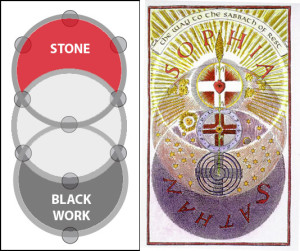 As a Martinist I would have stuck with the Tree of Life model, seeing that as I have already shown, the Theosophic Universal diagrams of Jacob Boehme actually fit into the Tree of Life as well.
As a Martinist I would have stuck with the Tree of Life model, seeing that as I have already shown, the Theosophic Universal diagrams of Jacob Boehme actually fit into the Tree of Life as well.
As far as I know my Order is the only one bringing these two ideas together.
I believe Martinist would benefit from having these diagrams present in their temples, and what’s more, they offer a Universal Schemata system on which to arrange the temple. While it is not Pasqually’s system, I find Boehme the real star in all things Martinist, and it combines the Reintegration Legend nicely to the universal schemata of the Tree of Life, if one but studies the two together.
In this arrangement the lower world is the realm of the Qlippoth and Boehme’ fiery wrath, at Tiphareth is the realm of Reintegration or the ‘sacrificed Will,’ and at Daath is to be found Sophia, who rebirths us into the higher paradise in Regeneration. In fact it not only fits the Reintegration Legend, it also fits with the Rosicrucian one, the dark realm being a fallen dark age of Europe, the second circle being the establishment of the Rosicrucian College of the Holy Spirit, and the higher realm belonging to Venus.
Pansophy Conclusion:
Utopian Vision Score: 6/10
Reformation Score: 6/10
Universal Schemata Score: 5/10
Total Pansophy Score for the Martinist Order: 17/30
Some Martinists might argue it’s a bit low, however considering Amorc got 7/30 for its total Pansophy Score this is pretty darn great. In fact I do not believe any Order could score higher in our times.
Stay tuned for my next post, where I’ll be rounding off the Martinist Review by covering their Wild Card score. In addition a total score is concluded from all previous M.O posts.
As with all reviews you’ll learn something new about the R.C, so hope to see you there.
Samuel Robinson
Founder, Pansophers.com.
Visit our homepage here.
Join our Facebook community here.

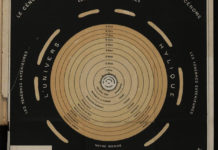
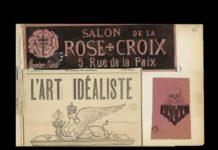
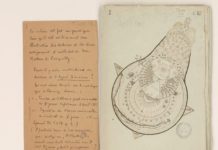







My first exposure to an in depth examination of my present Order.
All things will be reintegrated via Christ,
As scripture says “And the Kingdom shall be the Lords'” & “On that day, nations shall stream to it”
Also………”If any man (in Greek this is person, not a male) lacks Wisdom, let him ask God who richly supplies.”
And finally, “And then the Father gives all things to the Son, so that God may be all in all.”
Amen
And remember, Roses are Red 🙂